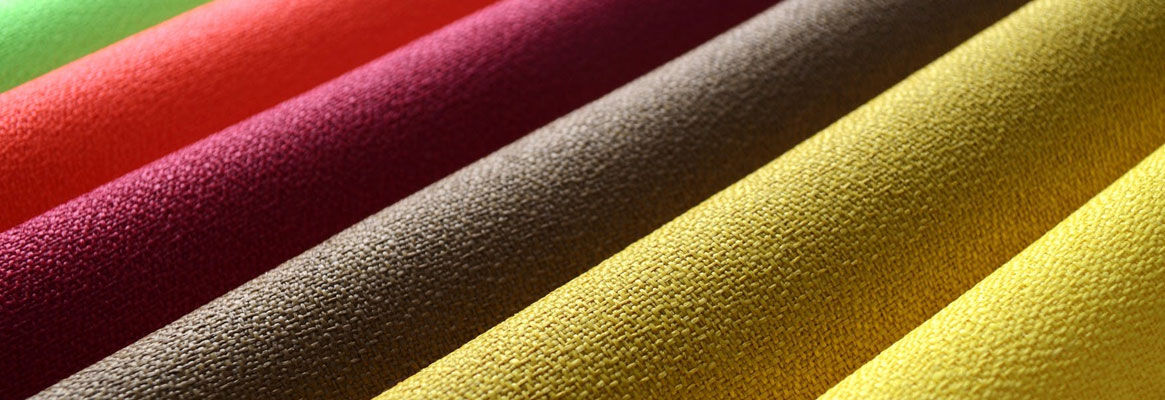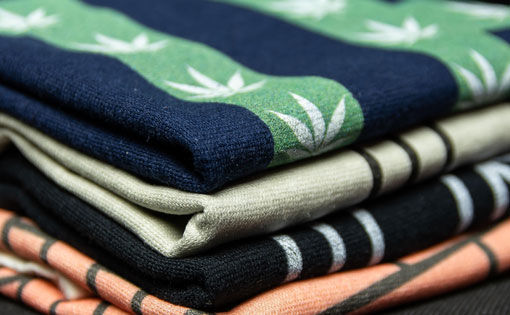It will be puzzling to the readers, why on earth I am using theword tango and in what sense? A brief introduction on tango will make sense andits relevance to the technical textiles industry in India. Tango is an Argentineandance, which has secured its right and prominent place in the western ballroomdancing. It takes two to tango. It needs flexibility and harmony to make itelegant. This is what the Indian textile industry should do. It should beflexible and create serious interest in unconventional textiles and there needsto be harmony between the leader, the conventional textiles sector and thefollower, the unconventional textile sector. This is "tango". Theword tango used metaphorically refers to growing or following a lead, which isa definite need for the Indian technical textiles industry.
Why talk about technical textiles in a recession?
The answer is in a recent article published in The WallStreet Journal. An article "H&M bets quietly on a textiles line"quipped about the less fanfare diversification of the Swedish fashion giantHennes & Mauritz to fashion textiles. H&M not sure on how the retailmarket will buy into the expansion unveiled its diversification with a greatcaution. What does this reveal? Even big names in the industry are not sure ofcommodity and consumer oriented markets in these difficult times. This H&Mincident in a way highlights certain aspects to the export oriented Indiantextile industry. The import volumes of commodity textiles in the US and Europe will not be as they were in early 2000s. The US and European textile chains arethemselves looking into diversification to stay afloat. These circumstancesreiterate our early recommendation that the Indian textiles industry should dotwo things immediately: 1) look for ways to expand laterally and 2) invest inthose segments of the industry that can cater to both foreign and domesticmarkets. The answer is "value-added" textiles industry. Value-additioncan be in commodity and non-commodity sectors and across the entire fiber tofashion supply chain.
State of the unconventional textiles industry in India
The unconventional textiles industry consists of woven, knitted,non-woven and composite sectors. Technical textiles segment of the textileindustry in India is highly fragmented, in some sense highly protective andvery embryonic. The woven and non-woven sectors are ahead of knitted andcomposite sectors with regard to their contribution to the technical textilessector in India. Knitting segment in heavily export oriented apparel sector,which has contributed enormously to the accumulation of foreign exchange andthe growth of the Indian manufacturing industry. Time is ripe for this industryto look beyond commodity apparels. The knitting sector as a whole is astreamlined industry with enough political clout, which should enablediversification fairly easier. With existing infrastructural resources, attemptshould be made to venture into value-added knitting. Existing resources can betweaked or improvised to develop composite performs, spacer fabrics, etc. Thesecan fetch new markets such as defense textiles, composite materials, outdoorand performance textiles. With regard to the woven sector, sizable activity isalready taking place in the technical textiles playing field such as developingcoated fabrics, canvas, tent fabrics, tarpaulins, tire cord fabrics, etc.Nonwovens is the new kid in the block that is making a decent noise in India recently. In the recent past five years, interests to know about the technology and investin non-woven technologies have grown exponentially. In this aspect, Lubbock, USA based Texas Tech University since 2004 has been providing an internationalplatform in India for industry, academia and governments from different partsof the world to talk about technical textiles. Government of India has followed suit and has been conducting several training workshops in collaborations withTextile Research Associations and international associations such as the Cary, USA based Association of the Non-woven Fabrics Industry, INDA and Brussels based EuropeanDisposables and Nonwovens Association. The real value of the Indian technicaltextiles industry is nebulous. More recently, the Office of the TextileCommissioner had contracted ICRA Management Consultancy to have an idea of thecurrent market size and growth opportunities. This report is available for thepublic through the Textile Commissioner's office. However, as a ballpark, theIndian non-woven industry is worth at 100,000 tonnes of roll goods output peryear, which can be equated to consumption. On other hand, China's output is one million tonnes or even more, and is 15 years ahead of India in this sector. This sector is also organized in China with a number of associationsrepresenting different processes and products such as the China Nonwovens andIndustrial Textiles Association.
Scope for the technical textiles industry in India
As a thumb rule, the growth of the technical textiles industry is directly related to the growth in the GDP. In July 2008, we predicted, based on the World Bank GDP forecast that Indias technical textile industry will grow at 13.3% per annum. The prediction was based on a recession free world and since then the economic recession that originated in the United States has crippled the entire world. How serious is this economic situation? Home foreclosures in the main streets of Arizona, bellying-up of Wall Street banks, declining manufacturing bases in China, closure of mining pits in towns as far as Hope in Western Australia all show how the world is coupled and different nations' economies are basically intertwined. India and China although seem to have not gone broken like Iceland or other developed economies are in no way immune to negative economic ripple effects. The GDP growth forecasts for India and China have been lowered recently and they are expected to grow between 6-7% per year. This growth figure is still significantly higher than the growth which will be witnessed by industrialized nations. The growth of 6-7% per year which India and China will experience will definitely contribute to the growth of the technical textiles industry. Although the growth may not be in double digits as predicted early on, even in these difficult economic situations, India will witness growth in service, manufacturing and agriculture sectors due to the growth in population and in particular, the middle class. This growth will lead to the need and consumption of life-style enhancing products such as nonwovens and technical textiles. These include textile materials that find applications in infrastructure projects such as roads and bridges, hospital textiles such as surgical drapes that have blood and bodily fluid repellant capabilities, hygiene and absorbent product and defense textiles.
Tips for the growth of technical textiles industry
As briefed above, the positive GDP growth of 6-7% expected in India necessitates the growth of indigenous nonwovens and technical textiles sectors. In the case of hygiene and absorbent products, India has raw materials such as cotton, polyester and rayon. However in the case of high tenacity and high performance fibers for applications in goe-textiles and defense materials, India still lacks its raw materials strength.
The following vignette, which is a representative list, indicates the actions necessary to grow the technical textiles industry.
- Make use of the existing strength in upstream processes such weaving, knitting and non-wovens to develop technical textile products.
- In the case of raw material requirements, proactive measures have to be undertaken to enter into technology transfer agreements or joint venture partnerships with high performance producers in the rest of the world.
- Trade bodies in India such as the Federation of Indian Chamber of Commerce and Industry (FICCI), the Confederation of India Industry (CII) and the Confederation of the Indian Textile Industry (CITI) should initiate serious programs towards promoting and boosting the awareness and growth of the burgeoning technical textiles sector.
- These industry trade bodies should create committees that will be charged to grow the technical textiles industry.
- An important task of the technical textiles committee of these established trade bodies is not to work in isolation but in harmony as one group, i.e., to tango for growth.
- The technical textiles committees of these independent trade bodies can still maintain their individual identities but can have a goal of growing technical textiles industry in India. This of course will benefit their members. This interest and effort among these trade bodies will result in a Consortium of Technical Textiles Industry to support the growth of technical textiles. The technical textiles consortium should take part trade and fact finding missions to USA and Europe. This way, there will be a solid and single platform in India for interacting with important trade bodies that deal with non-woven and specialty fabrics such as the Industrial Fabrics Association Inc., USA.
- The immediate task for the trade bodies is to start a dialogue for the creation of the technical textiles consortium.
- Active participation from the Government and the Centers of Excellence in Technical Textiles in the activities of the technical textiles consortium will serve the purpose well. This will help the industry to start on a high gear.
- The consortium involving industry members, Government and R&D organizations will increase the visibility and the clout of the embryonic Indian technical textiles sector in international trade expositions and conferences.
Who should bell the cat? In other words, who should spearhead the creation of technical textiles consortium? Texas Tech University will soon be initiating a dialogue with all stake holders and interested parties in India. This will be a beginning at least!
Predictions are that the recession will last for two more years. However economy will show some signs of recovery in early 2010. Although this gives a good sense of hope, world economy will not be the same as it was in early 2000s. The United States, which will be still the leader of the industrialized world will have budget deficit over the next decade totaling well over 9 trillion dollars. The US budget deficit per year will be around 4-5% of its GDP. This situation will devalue the US dollar. If the dollar weakens, its exchange rate with Indian rupee will be affected resulting in serious negative impact for the Indian export industry. This particular economic aspect warrants India to think seriously towards non-commodity and value-added sectors, i.e., technical textiles sector. Time is right for the Indian textiles industry to tango on the technical textiles platform. Spring is here now with longer sunshine days and the Indian textile industry should jump on the spring board and look for new growth opportunities. Surely, non wovens and technical textiles sectors should be taken seriously. Time is also right for a unified voice to represent the nascent technical textiles industry.
The information expressed are personal views of the author. Here 'I' refers to him.
The article was originally published in Textile Review, April 2009
About the Author
The author is associated with Nonwovens & Advanced Materials Laboratory, Texas Tech University, Lubbock, Texas, USA.








